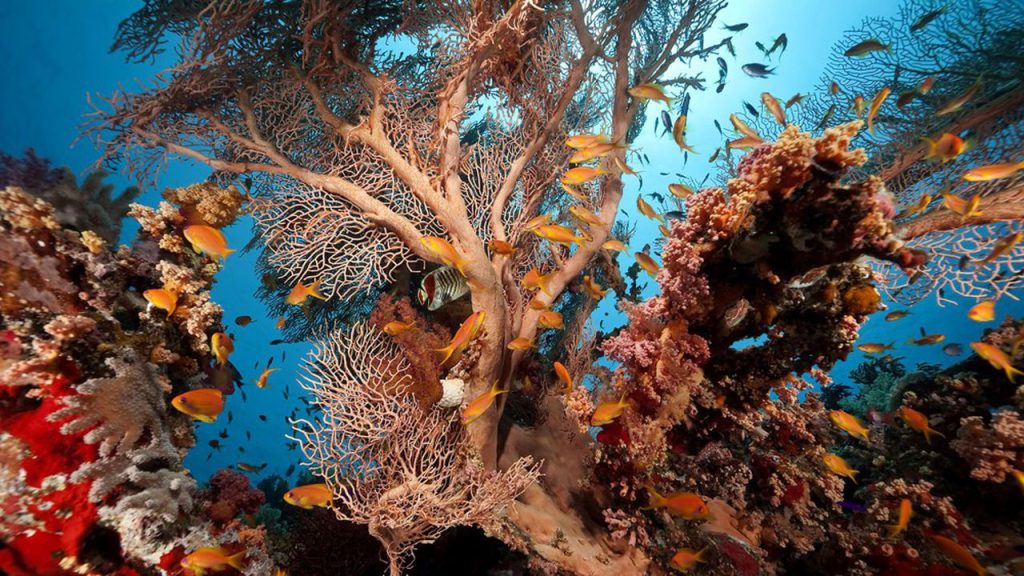
NGOs stand against seabed mining
Posted on Jul 7, 2022, 6:36am
Lithium for batteries or strontium for electric motors, these mineral resources increasingly prized by industrialists could soon be mined from the depths of the oceans. These minerals are found between 400 meters and 6 kilometers below the water’s surface, along with yeti crabs, multicolored anemones or tubeworms…a very rich biodiversity that seafloor mining may endanger, according to several NGOs. governmental.
The Deep Sea Conservation Coalition (DSCC) launched a moratorium, bringing together 90 international organizations. “We are asking for a break, it’s time for science to better understand these ecosystems and for institutions to organize themselves around this,” says DSCC Director Sian Owen. It is also a matter of ensuring that humanity in general, who has inherited these riches, consents to their exploitation. We are currently seeing the opposite. The more people hear about it, the more they oppose it. »
However, France abstained from the vote in the International Union for Conservation of Nature (IUCN) during the vote to halt the opening of the deep sea to the mining sector. Greenpeace also launched a petition asking the head of state to support the proposal. Almost 73,000 signatures have already been collected.
irreparable damage
François Chartier, responsible for the Ocean and Oil Campaign at Greenpeace France, fears that “going to the rig to exploit these resources could cause irreparable damage to marine ecosystems”. Industrialists can exploit three types of resources: polymetallic nodules, small stones resting on sand, hydrothermal vents, underwater hot springs, and crustaceans. Whether by picking up the nodules with a shovel, which would lift the sediment several hundred meters around, or by settling stacks and scales, the destruction would be almost final: “At these depths, the animals need corals to cling to. The very rich biomass will suffer, and for years Numerous because nodules are growing by 1 mm per million years according to the first analyzes”, warns François Chartier.
NGOs are also concerned about noise and visual pollution on ecosystems and the risk of breaking the chemical balance of the sea floor due to chemical dispersal of materials and the release of carbon stored in sediments. The issue of metal sorting and scrap release, some of which is likely to be carried out on the surface, raises questions about the dispersal of environments.
Exploration in murky waters
This damage, both large and widespread, may be even more alarming because it is currently difficult to understand its consequences: “Today we do not know these ecosystems very well, and we cannot understand the impact of sea floor exploitation,” explains Greenpeace’s advocacy for oceans and oil. This ignorance of the seabed undermines the possibility of rational resource management, according to Greenpeace. “With the envisaged technologies and poor knowledge of the environment, it is impossible to expect sustainable exploitation. We do not know how the sea floor will react,” emphasizes François Chartier.
The NGOs are also tracking a few large companies like Google, Volvo or Samsung that have already committed to not using these minerals, at least to allow time for science to understand these environments. According to Greenpeace, the profitability of the seafloor will not exist anyway. Mineral concentrations are very low: we are talking about ten grams per ton of sediment. »
However, some see the exploitation of the sea floor as good news: the abandonment of landmines and their catastrophic environmental and social consequences. An argument refuted by the director of the DSCC: “There is no evidence that the landmines will be closed. Opening the ocean floor will rather lead to lower prices, and therefore more pressure on farms,” explains Sian Owen.
Currently, only exploration is permitted on the high seas, not exploitation. However, a few bold young companies have already taken the initiative to learn more about the potential of the seabed, investing several million euros in cutting-edge technologies. Greenpeace regrets using the term exploration to refer to ongoing feasibility studies. We are already talking about mining activity. It is no longer scientists who are sent, but excavators,” notes François Chartier.

“Organizer. Social media geek. General communicator. Bacon scholar. Proud pop culture trailblazer.”
